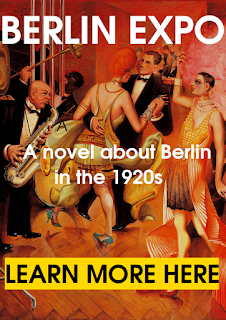Renée Sintenis
(1888-1965), born Renate Alice Sintenis was a German sculptor,
medalist and graphic artist , who worked in Berlin. She created
mainly small-sized animal sculptures, female nude figures, portraits
(drawings and sculptures) and sport statuettes .
Her surname is
of Huguenot origin.
Her mother was Jewish. The family moved to Berlin in 1905.
When Renée Sintenis (as she called
herself) became acquainted with Georg
Kolbe in 1910 , she became his model. Inspired by
this activity, she began to create female nudes herself,
expressive heads such as André
Gide and Joachim
Ringelnatz , athletes such as the Finnish runner Paavo
Nurmi and self portraits in graphic, sculptural and etching.
After 1915, the animal figures were
created, which became her artistic life theme. Since she
rejected monumentality, it was primarily small-scale
sculptures. These works, such as horses, deer, donkeys and dogs,
were very popular with the public as they fitted in every purse, were
convenient as gifts and could be kept in rooms, however small.
Since 1913, she
exhibited her sculptures regularly and was highly valued by her
colleagues from the Free Secession, the most important Berlin
artists' association. Her friendship with the portrait photographerFrieda Riess helped her to come in contact with famous personalities.
 |
| Portrait by Emil Rudolf Weiss |
Sintenis won in 1928 the third prize of
the Art Competition for the Summer
Olympic Games in Amsterdam .
Under the Nazis, Sintenis and her husband Emil Rudolf Weiss lived with
considerable restrictions. She continued to exhibit, although
one of her self-portraits was shown in an exhibition as an exemple of
Degenerate
Art.She was not banned from exhibiting, but, in contrast to her
succesful years in the 1920s, her economic situation was difficult,
and turned worse when she was forbidden to cast bronze in 1941.





No comments:
Post a Comment